WHAT IS THE BEST WAY TO SHIP MY FREIGHT?
There are various options for sending your freight which are dependent firstly on your time constraints, then the size of your shipment and also your budget.
LCL (Less than Container Load) is often considered the cheapest option however, depending on the transit time and size of your shipment it may be that international air courier is similar in cost and will take a lot less time.
It is best to discuss these variables with your freight agent first in order to understand all the options and choose the best service to suit your needs.
HOW DO I PACKAGE MY FREIGHT FOR TRANSIT?
Taking care of you freight starts with how your goods are packaged before picking up. Taking the time to ensure your freight is properly prepared for shipping will minimise the risk of damage to your goods and can save you a lot of time and money. You should always ensure goods are packaged in a way that is easy to transport and protected from damage. When necessary, fragile or delicate items should all be affixed with clear instructions on how to handle the freight.
If your goods are damaged in transit due to poor packaging/ handling instructions, you may need to pay for replacements or repairs and will also likely incur additional freight costs.
Time will also be lost by having to deal with the damaged freight, managing delays to deliveries and also time spent dealing with unhappy customers.
TYPES OF PACKAGING
Cartons (Cardboard Boxes)
- Enables easy handling of freight
- Ensures loose items can be kept together
- Can be packed with additional filling (foam) to protect goods
Pallets
- Commonly used
- Easy to handle and load onto trucks
- Ensures goods are stable
Preferably ensure top surface is flat
Crates
- Custom made to fit any sized freight
- Solid structure and weight bearing provides full protection
- Easy to load
Recommended to use professional crate building company
Shrink Wrapping
- Protects outer surface
- Makes freight more stable
- Prevents against friction
- Reduces risk of loss of items
Banding/Strapping
- Stops freight from slipping/sliding
- Can be used to bundle pallets together
HOW SHOULD I LABEL MY PACKAGE?
Clear labelling protects your freight and ensures carrier knows how to care for your freight.
All labels should include:
- Delivery address
- Contact Person and Phone Number
- Handling Instructions
- Any special handling requirements
DO I NEED FREIGHT INSURANCE?
The buyer/owner of the goods is always responsible for insurance while goods are in transit. You will need to take out additional marine cargo/ transit insurance. This is not covered under standard business insurance or covered by your freight agent.
The decision to insure your goods for transit is dependent on cost versus risk.
Team Express can offer one off cargo insurance as requested for individual shipments. However, if you have multiple shipments of high value you may want to consider taking out an annual insurance cover which would likely be more cost effective. You can discuss this with your current insurance provider to see if they can offer additional cover to protect your goods while in transit. Alternatively, we can assist with recommending an appropriate insurer.
HOW MUCH FREIGHT CAN I FIT IN A STANDARD SHIPPING CONTAINER?
20ft General
External Dimensions: 5.89m (long) x 2.35m (wide) x 2.36m (high)
Door Opening: 2.33m high x 2.26m wide
Cubic Capacity: 33cbm
Cargo Weight Max: 21700kg
20ft High Cube
External Dimensions: 5.89m (long) x 2.35m (wide) x 2.69m (high)
Door Opening: 2.33m high x 2.26m wide
Cubic Capacity: 37cbm
Cargo Weight Max: 21700kg
40ft General
External Dimensions: 12.05m (long) x 2.35m (wide) x 2.36m (high)
Door Opening: 2.33m high x 2.26m wide
Cubic Capacity: 66cbm
Cargo Weight Max: 26500g
40ft High Cube
External Dimensions: 12.05m (long) x 2.35m (wide) x 2.69m (high)
Door Opening: 2.33m high x 2.26m wide
Cubic Capacity: 76cbm
Cargo Weight Max: 26500g
COMMON SHIPPING TERMS
Ex Works (EXW)
Buyer pays for all freight charges from door to door i.e. From the sellers (suppliers) warehouse to the delivery location at the other end.
Free On Board (FOB)
The seller is responsible for engaging a freight forwarder to collect goods from the seller (supplier) and deliver to the origin port. All origin costs are to be paid by the seller. From this point the buyer is responsible for the freight. The buyers must engage their own freight forwarder to handle shipping. Buyer is responsible for paying the freight and destination costs.
Cost & Freight (CFR)
All origin and shipping costs up to destination port are the responsibility of the seller. They also control what freight forwarder handles the shipment. Buyer is only responsible for the ‘local’ destination charges.
Cost, Insurance & Freight (CIF)
All origin and shipping costs up to destination port are the responsibility of the seller. They also control what freight forwarder handles the shipment. Buyer is only responsible for the ‘local’ destination charges.
Delivery At Terminal (DAT)
All charges from sellers door to destination terminal are paid by the seller. The buyer is only responsible for delivery, customs clearance and customs import charges. The buyer must engage a delivery agent and someone to handle customs clearance.
Delivery At Place (DAP)
All charges from sellers door to the final delivery destination will be handle by the seller. Customs clearance can be handled by either party, as agreed by seller and buyer. Import duty and taxes must be paid by the buyer.
Delivered Duty Paid (DDP)
All charges including customs clearance, duty and taxes are paid by the seller. The seller is in full control of all aspects of shipping and delivery.
